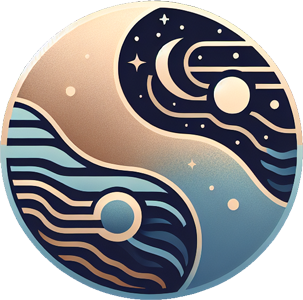
One of the most important tools in astrology are the 12 houses, which make up an astrological chart. This is truly where we take astrology from the generalized information you see in your average Sun sign column to something deeply personal. This is where astrologers can go so deep that people often wonder in awe: “How could you possibly know this about me?”
Entire books have been written about the houses in astrology, but in this post, I want to give you a clear overview: what the houses are, the most popular house systems, and how to start understanding the houses in your own natal chart.
The Circle of the Chart
Think of an astrology chart as a full 360º circle. This circle represents the sky and the stars around us, with the Earth right at its center. Everything in the top half of the circle is what you’d see looking up at the sky. Everything in the bottom half is what you’d see if you could drill straight down, through the Earth, and come up on the other side of the globe.
Over thousands of years, astrologers divided this circle into segments (like slices of pie) and noticed patterns. Planets moving through certain sections influenced relationships, trade, politics, religion, and more.
In our personal lives, each “slice” represents specific areas: finances, family, health, travel, career, dreams, even the subconscious mind, just to give a few examples.
The sign on the cusp of each house adds another layer, describing the different facets of our personality. Most of us act differently with family compared to friends, at work, or in romance. Different areas of life bring out different aspects of who we are.
Beyond the Big 3
While our Sun, Moon, and Rising signs are often called the “big three,” the truth is that all 12 zodiac signs live within each of us. Some are more emphasized than others, some are more private, and others are more public. The houses are what help reveal this full picture.
The Debate: Which House System?
The question of how to divide the astrological circle has fueled debate among astrologers for centuries. The three most common systems are Placidus, Equal, and Whole Sign.
Placidus
The Placidus system takes both time and location into account. This means houses can be unequal in size—some signs may rule more than one house, while others can be “intercepted” (completely contained within another house).
One challenge is that at high latitudes, some houses become huge while others shrink to tiny slivers, which can paint an oversimplified picture of personality. Personally, I’ve found this system less accurate, though many astrologers value it highly.
In Placidus, the IC always falls on the cusp of the 4th house, and the MC (Midheaven) always on the cusp of the 10th.
Equal Houses
The Equal House system divides the circle into 12 equal parts of 30º each. Each house begins at the exact degree of the Ascendant.
For example, if your Ascendant is at 20º Libra, your 2nd house will start at 20º Scorpio, your 3rd house at 20º Sagittarius, and so on.
The result: each zodiac sign is represented equally, though a house can still be “occupied” mainly by the following sign if your Ascendant degree is high.
Whole Sign
Whole Sign is the simplest to use. Each house corresponds entirely to one zodiac sign. Your Ascendant sign always rules your entire 1st house, no matter if your Ascendant degree is 0º or 29º.
Like Equal Houses, all 12 signs are represented equally, but here the IC and MC may not align with the 4th and 10th houses.
Extra Layers of Interpretation
In Equal and Whole Sign systems, the IC and MC can land in houses other than the 4th or 10th. This adds nuance.
For instance:
-
If your IC falls in the 3rd house, your sense of “home” might be more about mindset or communication than a physical place.
-
If your Midheaven is in the 11th house, your legacy may be defined less by career and more by your impact on community or society.
So, Which is Best?
Astrologers have debated this for centuries with no clear consensus. The most honest answer is: it depends on you.
Just like we all have different dietary needs—one person thrives on cottage cheese everything, another gets sick from it—different house systems resonate differently for different people.
While I personally prefer the Equal House system, I encourage you to experiment. If planets fall in one house with one system but in another with a different system, compare the interpretations.
-
If one feels completely wrong, you’ve found your best system.
-
If both hold some truth, you may choose to work with both.
This experimentation is where astrology becomes mind-blowing. Understanding the houses—and the system that works for you—takes a consultation from ordinary to extraordinary.

